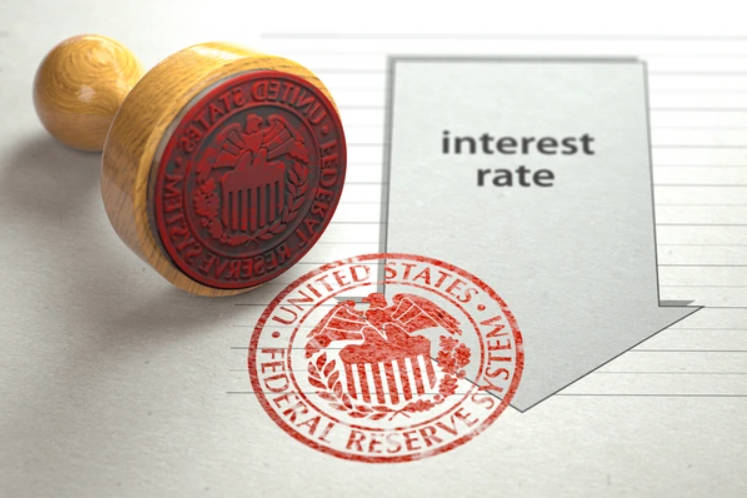Important Information
This website is managed by Ultima Markets’ international entities, and it’s important to emphasise that they are not subject to regulation by the FCA in the UK. Therefore, you must understand that you will not have the FCA’s protection when investing through this website – for example:
- You will not be guaranteed Negative Balance Protection
- You will not be protected by FCA’s leverage restrictions
- You will not have the right to settle disputes via the Financial Ombudsman Service (FOS)
- You will not be protected by Financial Services Compensation Scheme (FSCS)
- Any monies deposited will not be afforded the protection required under the FCA Client Assets Sourcebook. The level of protection for your funds will be determined by the regulations of the relevant local regulator.
Note: Ultima Markets is currently developing a dedicated website for UK clients and expects to onboard UK clients under FCA regulations in 2026.
If you would like to proceed and visit this website, you acknowledge and confirm the following:
- 1.The website is owned by Ultima Markets’ international entities and not by Ultima Markets UK Ltd, which is regulated by the FCA.
- 2.Ultima Markets Limited, or any of the Ultima Markets international entities, are neither based in the UK nor licensed by the FCA.
- 3.You are accessing the website at your own initiative and have not been solicited by Ultima Markets Limited in any way.
- 4.Investing through this website does not grant you the protections provided by the FCA.
- 5.Should you choose to invest through this website or with any of the international Ultima Markets entities, you will be subject to the rules and regulations of the relevant international regulatory authorities, not the FCA.
Ultima Markets wants to make it clear that we are duly licensed and authorised to offer the services and financial derivative products listed on our website. Individuals accessing this website and registering a trading account do so entirely of their own volition and without prior solicitation.
By confirming your decision to proceed with entering the website, you hereby affirm that this decision was solely initiated by you, and no solicitation has been made by any Ultima Markets entity.
I confirm my intention to proceed and enter this websiteWhat the Next Fed Rate Cut Could Mean
The Federal Reserve, or the Fed, is the central bank of the United States, responsible for managing monetary policy to maintain stable prices and maximise employment. One of the key tools it uses is adjusting the federal funds rate, which is the interest rate banks charge each other for overnight loans. As markets await the next Fed rate cut, understanding how these adjustments impact the economy is crucial for investors.
When the Fed cuts interest rates, borrowing becomes cheaper for businesses and consumers. This move is often intended to stimulate economic growth during slowdowns or periods of weak job creation. A rate cut can also influence markets, affecting the U.S. dollar, gold prices, bonds, and equities. Understanding what a Fed rate cut means is crucial for traders and investors trying to anticipate market trends.
With inflation stabilising and labor market growth slowing, speculation about the next Fed rate cut has been intensifying among economists, analysts, and investors alike.
What a Fed Rate Cut Usually Signals for Markets

When the Fed lowers interest rates, it usually signals slowing economic growth or moderate inflation. This decision’s aim is to influence financial conditions and support economic stability. Here’s how markets often react:
1. Inflation and Economic Growth
Rate cuts reduce borrowing costs, encouraging spending and investment as well as potentially supporting job growth and economic activity. The Fed closely monitors inflation expectations to ensure that inflation is moving sustainably toward its 2 percent target. While this can boost the economy, it may also indicate the Fed is concerned about slowing growth or inflation below target.
2. Stock Markets
Lower interest rates make it cheaper for companies to finance operations, often boosting equity markets, especially growth sectors like technology and consumer discretionary. If the Federal Reserve signals that inflation is under control, investors may gain greater confidence in the market outlook.
Historically, the S&P 500 tends to gain in the 3–6 months after a rate cut.
3. Bonds and Fixed-Income Assets
New bonds issued after a rate cut offer lower yields, so existing bonds with higher rates can increase in value by roughly 2-3%, benefiting current bondholders. Investors also watch for signals of further cuts if growth is slowing.
Additionally, lower interest rates can reduce government interest payments on debt, easing the fiscal burden.
4. Gold and Commodities
Lower rates decrease the opportunity cost of holding gold. As a result, gold prices often rise, serving as a hedge against potential inflation. Historical trends show gains of 2–5% in the month following a cut.
According to Bloomberg, recent gold price trends and forecasts also indicate that gold tends to perform well following Federal Reserve rate cuts.
5. Currency Markets
A lower U.S. rate reduces demand for dollar-denominated assets, which can weaken the U.S. dollar. This benefits exporters but may increase import costs.
6. Investor Psychology
A rate cut signals both support for the economy and caution about potential risks. While markets may respond with optimism in equities, some investors may be worried about the potential for a recession or further economic slowdown, even as they react positively to a rate cut. Bond and currency markets remain watchful.
Why the Next Fed Rate Cut is Likely

Historically, the Fed reduces rates when inflation is close to or below its 2% target or when economic growth slows. Current conditions suggest that policy easing may be on the table:
- Inflation: July’s inflation reading held steady at 2.7%, giving the Fed room to cut rates without risking runaway prices.
- Labor Market: U.S. employers added only 35,000 jobs per month over the past three months, down sharply from 128,000 jobs monthly in the previous quarter.
- Expert Commentary: U.S. Treasury Secretary Scott Bessent has suggested that an aggressive half-point (50 basis point) cut could be possible, suggesting a possible series of cuts totaling 150–175 basis points.
Investors are pricing in a 96% chance of a quarter-point rate cut at the next Fed meeting, according to the CME FedWatch Tool, reflecting widespread expectations of easing.
Current Market Conditions Ahead

The Fed faces a delicate balancing act: core inflation has ticked slightly higher, but overall price levels remain manageable. Meanwhile, slower job growth raises concerns about potential economic slowdown. External factors such as tariffs could influence inflation data, adding uncertainty to upcoming Fed decisions.
With the federal funds rate currently at 4.25%–4.5%, analysts are closely watching inflation trends, employment reports, and central bank commentary to anticipate the next Fed rate cut.
Conclusion
The next Fed rate cut is more than a single policy decision—it serves as a signal to the markets. Traders and investors watch these moves closely to gauge economic momentum, shifts in liquidity, and potential market opportunities across stocks, bonds, gold, and currency. While rate cuts often aim to stimulate growth, their broader impact depends on market expectations and investor sentiment. Staying alert to these signals allows traders to adjust strategies, manage risk, and position portfolios effectively for the evolving financial landscape.
Disclaimer: This content is provided for informational purposes only and does not constitute, and should not be construed as, financial, investment, or other professional advice. No statement or opinion contained here in should be considered a recommendation by Ultima Markets or the author regarding any specific investment product, strategy, or transaction. Readers are advised not to rely solely on this material when making investment decisions and should seek independent advice where appropriate.












